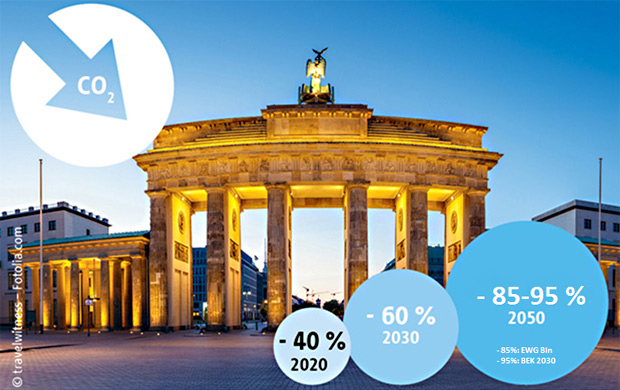Mr. Governing Mayor, why is Berlin a progressive city?
Since the fall of the Wall – the 30th anniversary of which will be celebrated on 9 November 2019 – Berlin has reinvented itself like virtually no other EU city. The cosmopolitan, tolerant and innovative metropolis attracts creative and talented people from around the world. This trend is reflected most clearly in the rapid growth of the city’s population, which currently stands at 3.8 million, with around 40 000 new Berliners arriving every year. Berlin’s status as a hotspot for future industries and technologies means that this systematic development will continue. The city’s Zukunftsorte (sites for future innovations) play an important role in this regard, such as the internationally renowned Adlershof science and technology park, where network structures exist or are created on site between science and business. Actual interaction and cooperation between business, research and technology institutions boosts the regional economy’s competitiveness and capacity for innovation. The Zukunftsorte, which attract technology and knowledge-based companies and provide space for innovative ideas and creativity, are key to this. The latest Zukunftsort, Siemensstadt (Siemens City) 2.0, was opened in Spandau in early April 2019 and will become a new innovation campus. EU funding, in particular from the Structural Funds and the framework programme for research, technological development and demonstration activities, are used to help further optimise the framework conditions for the interlinking of science, research and business. Last but not least, Berlin institutions cooperating with European and international networks facilitate exchanges and help to further improve competitiveness in a globalised economy.
How is Berlin helping to implement the Sustainable Development Goals (SDGs) on the ground and which of them has it prioritised?
Berlin has set itself the target of becoming climate neutral by 2050 at the latest. The Berlin Energy Transition Act stipulates that the capital must cut its CO2 emissions by 60% by 2030 and by 85% by 2050 compared to 1990 levels, but the city is targeting a greater reduction of 95%. Since 2017, electricity and energy are no longer being generated from lignite, and the hard-coal-fired units in coal-fired power plants are due to be shut down by 2030. Berlin is also planning to increase the share of solar power by means of its master plan Solarcity. The various programmes and strategies for achieving climate neutrality and adapting to climate change are set out in the 2030 Berlin Energy and Climate Protection Programme. The public administration is making good progress and is aiming to be climate neutral by as early as 2030. Building on many years of experience of green procurement, Berlin is currently amending the law to further improve the ecological and social aspects of public procurement.

To accelerate the switch to greener modes of transport, Berlin has passed a law to prioritise local public transport, walking and cycling over individual motorised transport. The required infrastructure is being continuously improved. The city is taking various measures to reduce pollution, based on its clean air plan and noise action plan.
With the zero-waste action plan, the capital aims to switch from the existing waste management system to a modern closed-loop economy model, while the Berlin food strategy was developed to pave the way for a more sustainable urban food system.
Berlin is striving to meet a number of SDGs at the same time through specific measures. For example, the energy renovation of a building in the Freie Waldorf school in Prenzlauer Berg combined the resource-efficient use of sustainable and healthy building materials with a nature-oriented playground design achieved by removing paved surfaces and harvesting rainwater.
Finally, as part of the Metropolis network, Berlin is committed to enhancing the SDGs in urban contexts. The interactive urban sustainability exchange (use) platform – created at Berlin’s initiative – gathers expertise and good examples of sustainable urban policy, and facilitates mutual learning.
Has the European Union helped Berlin to become a sustainable city?
For the 2014-2020 funding period, Berlin was allocated around EUR 635 million from the European Regional Development Fund to stimulate business-related investments in research and development, support structure-related start-ups, promote measures to reduce CO2, and encourage sustainable urban development. The funds are being used to help mitigate climate change and combat poverty and exclusion in the city, among other things. The money from the Structural Funds provides a reliable financial framework for successfully advancing long-term strategies, and enables results to be achieved more quickly and with a broader reach than would be possible without co-financing. In particular, this funding can be used to create positive examples, such as complex long-term projects aiming to achieve various objectives at the same time, for example protecting the environment, adapting to climate change, promoting SMEs, reducing noise and air pollution, and improving the urban climate and biodiversity.
Some EUR 215 million from the European Social Fund is available to Berlin in the current funding period. This money is being spent on the capital’s citizens, with the focus on facilitating the social inclusion of disadvantaged groups, improving the qualifications of job seekers, tackling youth unemployment and optimising general and vocational education.
Michael Müller has been Governing Mayor of Berlin since 2014. He belongs to the Social Democratic Party of Germany (SPD).
**
Photo credit: Unsplash/Jonas Tebbe
